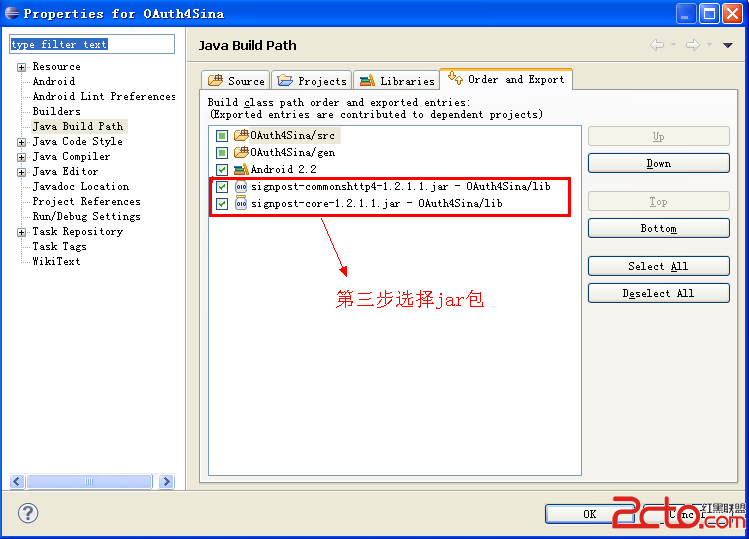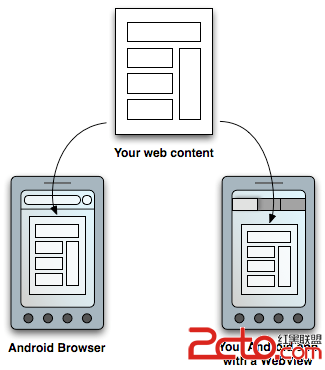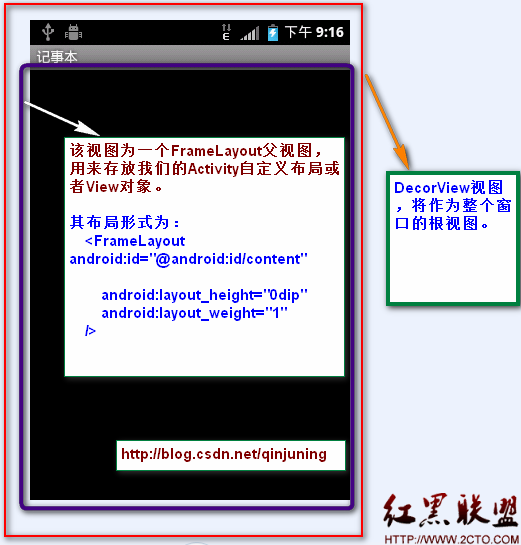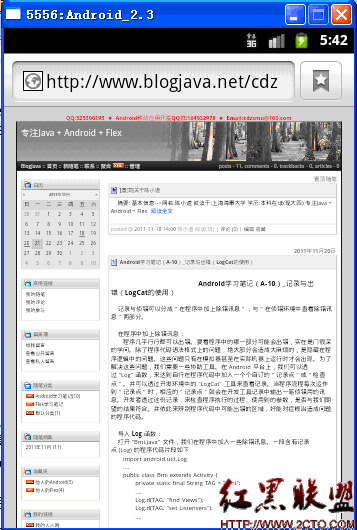Android Camera(三)
把预览类放到布局中
Camera的预览类,如上文所示的示例,必须要跟用户界面控件一起放到一个Activity的布局中,以便拍照或录像。本段向你显示如果构建一个基本的用于预览的Activity布局。
下面的布局代码提供了一个很基本的View,它能够用于显示Camera的预览图像。在这个示例中,FrameLayout元素被用于Camera预览类的容器。使用这个布局类型可以让额外的图像信息或控件能够覆盖在实时的Camera预览图像之上。
<?xml version="1.0" encoding="utf-8"?>
<LinearLayout xmlns:android="http://schemas.android.com/apk/res/android"
android:orientation="horizontal"
android:layout_width="fill_parent"
android:layout_height="fill_parent"
>
<FrameLayout
android:id="@+id/camera_preview"
android:layout_width="fill_parent"
android:layout_height="fill_parent"
android:layout_weight="1"
/>
<Button
android:id="@+id/button_capture"
android:text="Capture"
android:layout_width="wrap_content"
android:layout_height="wrap_content"
android:layout_gravity="center"
/>
</LinearLayout>
在大多数设备上,Camera预览的默认方向是横向。这个示例布局指定了一个水平(横向)布局,并且下面的代码把应用程序固定为横向。为了简化Camera预览中的展现,你应该通过在你的清单文件中添加以下设置,把应用程序的预览Activity的方向改变为横向的:
<activity android:name=".CameraActivity"
android:label="@string/app_name"
android:screenOrientation="landscape">
<!-- configure this activity to use landscape orientation -->
<intent-filter>
<action android:name="android.intent.action.MAIN" />
<category android:name="android.intent.category.LAUNCHER" />
</intent-filter>
</activity>
注意:Camera的预览不一定就是横屏模式。从Android2.2(API Level8)开始,你能够使用setDisplayOrientation()方法来设置预览图像的旋转。为了重新定位用户手的预览方向,在你的预览类的su易做图ceChanged()方法中,首先要用Camera.stopPreview()方法停止预览,然后改变方向,再用Camera.startPreview()方法启动预览。
在Camera View的Activity中,把你的预览类添加到上例所示的FrameLayout元素中。你的Camera Activity还必须确保在它被挂起或关闭时,要释放Camera对象。以下示例显示如何把上文中创建的预览类添加到Camera的Activity中:
public class CameraActivity extends Activity {
private Camera mCamera;
private CameraPreview mPreview;
@Override
public void onCreate(Bundle savedInstanceState) {
super.onCreate(savedInstanceState);
setContentView(R.layout.main);
// Create an instance of Camera
mCamera = getCameraInstance();
// Create our Preview view and set it as the content of our activity.
mPreview = new CameraPreview(this, mCamera);
FrameLayout preview = (FrameLayout) findViewById(R.id.camera_preview);
preview.addView(mPreview);
}
}
注意:上例中的getCameraInstance()方法引用了上文“访问Camera”中的示例方法。
采集图片
一旦你构建了一个预览类,并把它放到了一个View中,你就可以开始用你的应用程序来采集应用程序了。在你的应用程序代码中,必须建立用于响应用户拍照操作的用户界面控件的易做图。
要使用Camera.takePicture()方法来获取一张图片。这个方法需要3个参数来接收来自Camera的数据。为了接收JPEG格式的数据,你必须实现接收图片数据的Camera.PictureCallback接口,并把接收到数据写到一个文件中。下面的代码显示了一个Camera.PictureCallback接口的基本实现,它把从Camera接收到的数据保存到一个图片文件中:
private PictureCallback mPicture = new PictureCallback() {
@Override
public void onPictureTaken(byte[] data, Camera camera) {
File pictureFile = getOutputMediaFile(MEDIA_TYPE_IMAGE);
if (pictureFile == null){
Log.d(TAG, "Error creating media file, check storage permissions: " +
e.getMessage());
return;
}
try {
FileOutputStream fos = new FileOutputStream(pictureFile);
fos.write(data);
fos.close();
} catch (FileNotFoundException e) {
Log.d(TAG, "File not found: " + e.getMessage());
} catch (IOException e) {
Log.d(TAG, "Error accessing file: " + e.getMessage());
}
}
};
通过调用Camera.takePicture()方法来触发采集图片的操作。下面的示例代码显示了如何从一个按钮的View.OnClickListener中调用这个方法:
// Add a listener to the Capture button
Button captureButton = (Button) findViewById(id.button_capture);
captureButton.setOnClickListener(
new View.OnClickListener() {
@Override
public void onClick(View v) {
// get an image from the camera
mCamera.takePicture(null, null, mPicture);
}
}
);
注意:代码中的mPicture成员变量会在下面的示例代码中引用。
警告:记住,在应用程序使用完Camera对象后,一定要调用Camera.release()方法来释放Camera对象。
采集视频
使用Android框架采集视频需要认真的管理Camera对象,以及跟MediaRecorder类的协调。当使用Camera对象记录视频时,除了Camera.open()和Camera.release()方法的调用以外,还必须管理Camera.lock()和Camera.unlock()方法的调用,从而允许MediaRecorder对象访问Camera硬件。
注意:从Android4.0(API Level 14)开始,Camera.lock()和Camera.unlock()方法调用系统会为你自动管理。
跟拍照不一样,采集视频需要非常特殊的调用顺序,必须按照一个特定执行顺序
补充:移动开发 , Android ,




